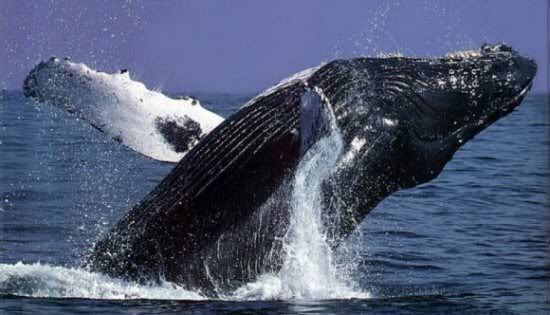Four stories in the news at 4 o’clock. Simple, huh?
-
While Gen. David Petraeus and Ambassador Ryan Crocker continue with the White House ‘stay the course’, ‘just a little be longer’ rhetoric today while facing skeptical Senators who will, undoubtedly, turn around and vote for more “emergency” funding for Iraq, an analysis in the Los Angeles Times quotes a Mideast specialist that “Bush has found his exit strategy,” bequeath Iraq to successor. Meanwhile, “Newsweek has learned that a separate internal report being prepared by a Pentagon working group will ‘differ substantially’ from Petraeus’s recommendations… An early version of the report, which is currently being drafted and is expected to be completed by the beginning of next year, will ‘recommend a very rapid reduction in American forces: as much as two-thirds of the existing force very quickly, while keeping the remainder there.’ The strategy will involve unwinding the still large U.S. presence in big forward operation bases and putting smaller teams in outposts.” Senior Pentagon officials, including Petraeus’ commander, Admiral William Fallon, want to “draw down faster”.
-
 Yesterday’s Four at Four reported a brief bit of good news for whales, but today’s the bad whale news returns with a Los Angeles Times story, Gray whale recovery called incorrect. “The success story of the Pacific gray whales’ full recovery from near-extinction is wrong, according to a new genetic analysis that pegs the current population at only one-third to one-fifth of historical levels. ¶ By examining subtle variations in DNA taken from 42 modern whales, scientists have concluded that between 78,500 and 117,700 gray whales lived before the heyday of commercial whaling in the 19th and 20th centuries. ¶ That finding, published today in the Proceedings of the National Academy of Sciences, suggests that the about 22,000 gray whales now swimming along the California coast remain a depleted population.” Unfortunately, it gets worse.
Yesterday’s Four at Four reported a brief bit of good news for whales, but today’s the bad whale news returns with a Los Angeles Times story, Gray whale recovery called incorrect. “The success story of the Pacific gray whales’ full recovery from near-extinction is wrong, according to a new genetic analysis that pegs the current population at only one-third to one-fifth of historical levels. ¶ By examining subtle variations in DNA taken from 42 modern whales, scientists have concluded that between 78,500 and 117,700 gray whales lived before the heyday of commercial whaling in the 19th and 20th centuries. ¶ That finding, published today in the Proceedings of the National Academy of Sciences, suggests that the about 22,000 gray whales now swimming along the California coast remain a depleted population.” Unfortunately, it gets worse.The results counter what had been a predominant scientific view that the iconic creatures of the West Coast were so bountiful that they were overgrazing their traditional feeding grounds. Instead, the findings provide further evidence that this year’s abnormally high number of skinny whales is a sign of deterioration of the vast ocean ecosystem that stretches from Baja California to the Bering Sea.
“If the oceans a few hundred years ago could support 100,000 gray whales, why can’t the oceans sustain 20,000 whales today?” said Stephen Palumbi, a Stanford University marine sciences professor and senior author of the study.
-
The oceans are trying to tell us something. From The Independent today is the ominous story that climate change will harm life on the deep ocean floor. “A study of the most remote forms of life on Earth has found that their splendid isolation on the deep seabed will not protect them from environmental catastrophes on the surface. ¶ Scientists used to believe that a global disaster that wiped out most of the life on Earth would not touch the unusual organisms that live around the mineral-rich vents on the sea floor. But research by a team of British scientists has found that even these deep-sea creatures which live in total darkness and survive on the chemical energy oozing from mineral vents on the seabed are not immune from the seasonal changes above.” In addition, the change has already started. In a diary at Daily Kos, jbalazs writes that the National Snow and Ice Data Center has found the melting polar ice caps are changing ocean circulation.
-
Lastly, this report from Reuters, Biofuels may harm more than help. “The Organization for Economic Cooperation and Development (OECD) said biofuels may ‘offer a cure that is worse than the disease they seek to heal’. ¶ ‘The current push to expand the use of biofuels is creating unsustainable tensions that will disrupt markets without generating significant environmental benefits,’ the OECD said. ¶ ‘When acidification, fertilizer use, biodiversity loss and toxicity of agricultural pesticides are taken into account, the overall environmental impacts of ethanol and biodiesel can very easily exceed those of petrol and mineral diesel,’ it added.” Their advice? Cut consumption. “‘A liter of gasoline or diesel conserved because a person walks, rides a bicycles, carpools or tunes up his or her vehicle’s engine more often is a full liter of gasoline or diesel saved at a much lower cost to the economy than subsidizing inefficient new sources of supply,’ it said.” Also OECD suggest encouraging “developing countries that have ecological and climate systems more suited to biomass production” to become producers.
One more story below the fold…

 I had never heard of jatropha before this story,
I had never heard of jatropha before this story,  While the ice is disappearing at a catastrophic rate, “polar bears – the very symbol of the Arctic’s looming environmental disaster – are crashing towards extinction as a result of global warming, the US government has found.” The Independent reports more on
While the ice is disappearing at a catastrophic rate, “polar bears – the very symbol of the Arctic’s looming environmental disaster – are crashing towards extinction as a result of global warming, the US government has found.” The Independent reports more on